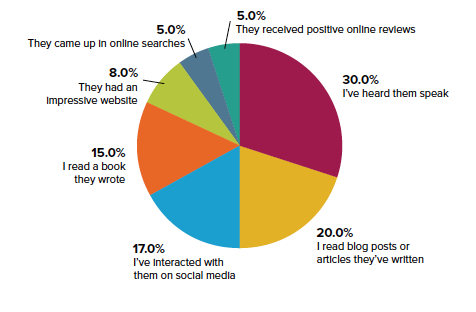How Referral Marketing Has Changed
and Why It Matters!
Referral marketing has dramatically evolved over recent years and, if your firm has not adopted new tactics and strategies, you may be leaving significant business on the table. In this post, Dr. Frederiksen shares some of Hinge Marketing’s thinking about how referral marketing has changed. In the coming months, Dr. Frederiksen will continue exploring this topic, looking first at the process of developing a referral marketing strategy, and then discuss some of the most effective tactics his firm has seen.
[su_pullquote align=”right”]Resources:
Rethinking Referrals—Research-Based Approach to Attracting More Referrals
Implementing Your Referral Marketing Plan
Marketing Techniques to Gain Referrals
Gaining an Advantage in a Changing Marketplace
The Impact of the Changing Marketplace on Referrals
[/su_pullquote]
Referral marketing has dramatically evolved over recent years and, if your firm has not adopted new tactics and strategies, you may be leaving significant business on the table.
The reason?  The professional services field itself has changed, as has buying behavior in general. Firms are receiving high quality referrals not only from their clients, but also from other firms and individuals they have never worked with…and they are winning new business as a result.
In a survey of 523 professional services firms my company did a few years ago, we found that referral marketing was respondents’ top marketing initiative, for several reasons. First, it addresses their most commonly cited challenge: generating new business. Second, in related research, we found that when buyers are searching for a new professional services provider, their most common resource is asking friends and colleagues. When searching for accounting firms, for example, as many as 87% of buyers seek recommendations from friends and colleagues. Third, if you market effectively, the universe of people who have heard of your expertise is far larger than your actual list of clients, and so is the potential impact on new business.
In this post, I will share some of my firm’s thinking about how referral marketing has changed. In the coming months, I will continue exploring this topic, looking first at the process of developing a referral marketing strategy, and then discussing some of the most effective tactics we have seen.
The New Type of Referral
To understand today’s referral marketing, you may need to expand your definition of a referral to include expertise-based referrals. These referrals come from people who have not worked with you directly but are still familiar with your firm and its reputation or expertise. How did they gain that familiarity with you, even if they never used you?  There are several possible ways, depending on how active your referral marketing program is:
- They might have heard about your expertise from one of your clients,
- They may have seen content you produced and shared, or
- They might have heard that you specialize in certain industries or services.
This is probably not a complete surprise—after all, 81.5% of firms report getting referrals from people they have never worked with directly. What drives these types of referrals?  As shown in Figure 1, our research has found that expertise-based referrals are generated by several major sources.
 Figure 1. Sources of Expertise-Based Referrals
Figure 1. Sources of Expertise-Based Referrals
Clearly, to truly benefit from expertise-based referrals, you need to first share your expertise. This knowledge-sharing can occur in many ways: speaking engagements (named by 30% of respondents as the way they heard of a given firm’s expertise), articles and blog posts (20%), books (15%), and social media (17%). If these channels sound familiar, it is because they are also the essential parts of a successful content marketing strategy.
The Modern Way to “Kick a Firm’s Tires”
There is another aspect of referral marketing that plays a major role, and it has to do with buying behavior. Many professional services firms know that they can reliably turn referrals into clients…if only they can get to that first conversation.
The problem is that many never get the chance. Our research shows that almost 52% of buyers report that they have ruled out firms without ever talking to them. This is where a firm’s overall marketing efforts can make or break referral marketing.
Our research on buying behavior shows that most buyers check out prospective providers online before going any further, and a firm’s website is by far the most frequently used information source (cited by 80% of respondents). But a bad, or even mediocre, website can stop a referral dead in its tracks. As Figure 2 shows, of all the commonly-cited reasons that buyers rule out referrals, unimpressive websites (and ineffective marketing in general) are most often to blame.
 Figure 2. Why Buyers Rule Out Referrals
Figure 2. Why Buyers Rule Out Referrals
Time to Rethink Referrals?
Fortunately, you can fix (or even avoid altogether) most of the causes of failed referrals. To avoid getting ruled out, you need to understand your target audience, and share your expertise through educational and relevant content. And you need to use your website and other marketing efforts to show your audience why your knowledge and expertise matter to them. To learn more, I recommend checking out the Referral Marketing course at Hinge University, specially priced for NACVA members.
Next Month: Developing a Killer Referral Marketing Strategy
Lee W. Frederiksen, PhD, is Managing Partner at Hinge, the leading branding and marketing firm for the professional services. Hinge conducts groundbreaking research into high-growth firms and offers a complete suite of services for firms that want to become more visible and grow.
Dr. Frederiksen can be contacted at (703) 391-8870 or by e-mail to LFrederiksen@hingemarketing.com.










